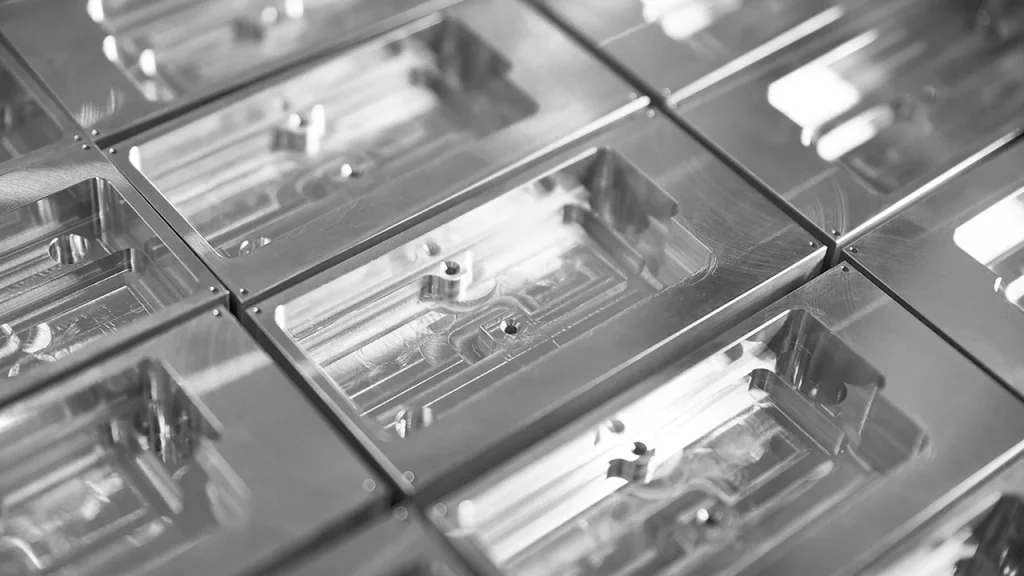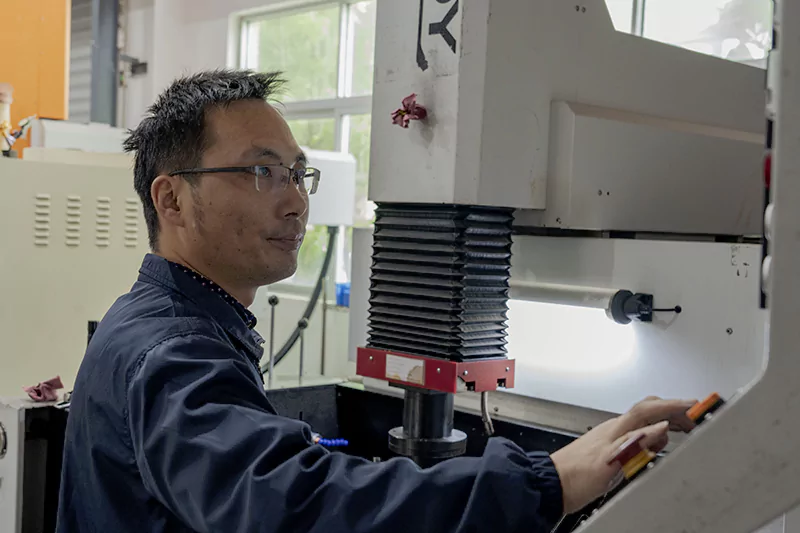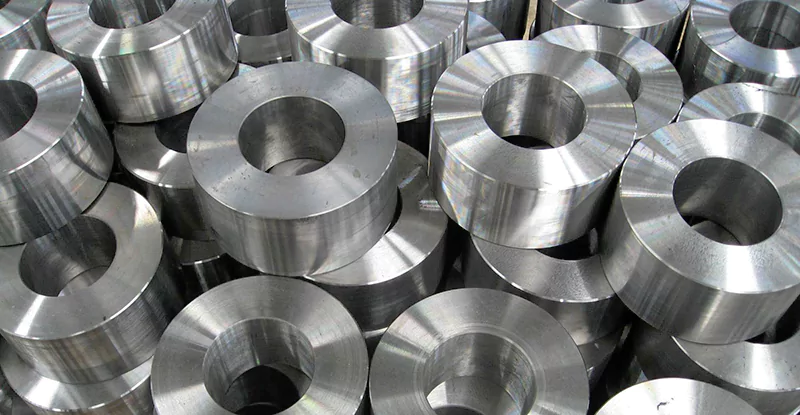The increased need for better efficiency in complex machining goods by sectors is projected to impact the growth of the CNC manufacturing industry. Yet, the growing demand for high precision and lower operating costs, as well as technological developments in manufacturing processes, are all impacting the appeal of CNC technology.
However, the spike in mass manufacturing of items across industry verticals, including automotive and electronics, is responsible for the expansion of the CNC (Computer Numerical Control) machine market. Increased demand for mass customization is also driving the adoption of these technologies.
So what are the risks associated with this market and its possible manufacturing business model? Is this market capable of advancing further with new manufacturing trends? Let’s go through everything in more depth below.

Challenges and Limitations of CNC Manufacturing
Some common challenges and limitations encountered by CNC manufacturing companies today include the following:
Cost of Equipment and Software
For CNC machining enterprises, the cost of equipment and software can be a substantial barrier to advancement. This is particularly relevant for newer or smaller businesses. Using computer numerical control (CNC) machining demands specific hardware and software that can be costly to obtain and maintain.
Yet, this is not the only disadvantage CNC manufacturing companies face due to this widespread constraint. Instead, this constraint and expense issue brings up other concerns for the organization, including the following ones:
- The initial investment: CNC machines and other related equipment can be expensive, making it challenging for smaller enterprises to enter the field. Because of the high equipment cost, a corporation may be unable to provide all the services it would like to its customers since certain devices are simply out of its price range.
- Expenses Related to Software: CNC machines require specialized software to function properly, which may be expensive to purchase and maintain. Costs may be driven further by the requirement to continually update software to remain competitive with industry standards and keep pace with technological advances.
- Expenses Related to Training: CNC machines require qualified operators and programmers, which can be a substantial expense for the organization regarding training and education expenses.
- Competition: New companies trying to enter the CNC machining industry may face a hurdle due to the high cost of equipment and software needed to operate the machines. This can impede the overall growth and progression of the industry.
The Necessity for Skilled Labor
Using a computer-aided design (CAD) model and computer-aided manufacturing (CAM) software to generate the necessary code and instructions for the CNC machine is at the heart of the CNC manufacturing process.
As a result, workers need to have a solid understanding of intricate and precise programming and simulation to operate the CNC machine and its motions. If done without it, programming and simulation can be time-consuming, expensive, and prone to errors or inconsistencies. This issue is especially true for complicated or unique designs with several axes, tools, or procedures.
Before beginning the CNC machining process, designers and programmers should use sophisticated and dependable CAD/CAM software, verify and validate the code, and run simulations. This issue is the most effective method for overcoming this obstacle.

Machining Difficulties Associated with Certain Materials
The difficulty in machining particular materials with CNC machines can be attributed to various factors, such as the material’s inherent physical properties, the equipment utilized during the machining process, and the cutting conditions.
The hardness or the toughness of particular materials presents a common difficulty in the machining process. Titanium, hardened steel, and high-strength alloys are materials that can be challenging to mill because of their extreme hardness and ability to rapidly wear out cutting tools. This can result in greater tooling costs as well as longer machining times.
The tendency of the material, when subjected to cutting pressures, to distort or deflect presents another issue. This can lead to problems such as imperfect surface polish, inaccurate dimensions, and broken tools.
In addition, the machining process can cause certain materials to undergo thermal expansion or contraction, which can lead to the component being machined being distorted or warped. This can be avoided by selecting thermally stable materials. Machining some materials can be challenging, which is a rather typical problem, especially in high-performance applications that demand materials with precise physical qualities.
However, developments in cutting tool technology and machining methods have helped to minimize some of these obstacles, making it feasible to manufacture a larger range of materials with higher precision and efficiency. This is one of the many benefits of technological advancements.

The Complexity of Designs and Its Restrictions
Machining with computer numerical control (CNC) has several obstacles, one of the most significant of which is its several design limits that may restrict the parts’ size, form, and geometry. For instance, CNC machining cannot produce parts with undercuts, internal corners, or hollow features unless supplementary tools or processes are employed.
Hence, complex or unique designs may require additional setups, tool changes, or secondary operations. This complexity can increase the production process’s time, cost, and difficulty level. The designers should consider the capabilities and constraints of CNC machining and optimize their designs in accordance with those considerations to avoid these limitations.
Also Read: The Importance of Design and Location of Sprue in Injection Molding
Expenses Associated with Maintenance and Repairs
Another typical obstacle that CNC manufacturing companies have to overcome is the requirement for routine tool maintenance to address wear and tear. Maintenance performed regularly helps to ensure the quality and uniformity of the parts. Because of their high-speed and high-pressure contact with the material, the tools used in CNC machining are susceptible to wear and tear.
This can harm the tools’ performance, precision, and lifespan and result from errors, failures, or faults in the parts. As a result, operators of CNC machining equipment are required to monitor and measure the wear and condition of the tools and replace or repair the tools as required. In addition, they are responsible for performing routine maintenance on the CNC machine and its components, such as the spindle, coolant, and lubricant, to avoid any breakdowns or malfunctions.
Choosing Materials
Machining with computer numerical control (CNC) presents several challenges, including the requirement of meticulous material selection for the parts. Cutting, drilling, or milling the material with high-speed tools is required for CNC machining. This process can cause heat, friction, and stress on the material being worked on.
Hence, the material must be suitable for CNC machining and have the attributes sought, such as strength, durability, machining capacity, and aesthetics. For CNC machining, certain materials, such as plastics, composites, or metals with high hardness or flexibility, might provide challenges or hazards, including melting, chipping, cracking, or warping. However, selecting the appropriate cutting parameters can mitigate these challenges and risks. To solve this problem, designers should select the material that optimally satisfies the design requirements and the CNC machining settings.
Future of CNC Manufacturing
One of the emerging trends in the machine tool business is the increasing use of additive and subtractive CNC machines. As a result, manufacturers are producing hybrid machinery to keep up with the same trend. For example, during Formnext 2019, DMG MORI introduced the LASERTEC 125 3D, a hybrid manufacturing machine. The LASERTEC 125 is a 5-axis laser deposition welding system designed to repair, maintain, and produce large workpieces weighing up to 2,000 kg.
The rising demand for CNC machines in electrical equipment, consumer products, and electronics manufacturing will drive market expansion. Given the increasing market expansion, we may anticipate certain trends and advancements in the CNC manufacturing business shortly. Among these trends are:
- Industry 4.0 and Automation: Manufacturing processes can become more efficient and automated by combining CNC machines with Industry 4.0 technologies such as IoT and AI. It helps reduce expenses and speeds up production while boosting accuracy and quality.
- Additive Manufacturing: By combining CNC machines with additive manufacturing technologies such as 3D printing, new prospects for quick prototyping and low-volume production are emerging. This trend allows for more agile and responsive manufacturing processes that respond swiftly to changing market demands.
- Customization and Flexibility: As customers want more customized items and shorter lead times, more flexible and adaptable CNC machines are being developed. Multi-tasking machines, which can do many operations in a single configuration, and hybrid machines, which integrate diverse machining processes, are examples.
- Globalization: The increasing global trade and emerging new economies drive the demand for CNC manufacturing services worldwide. This presents a lucrative opportunity for CNC producers to expand their reach and venture into untapped markets.
- Sustainability and Efficiency: CNC production is becoming more sustainable, emphasizing waste reduction, energy efficiency, and ecologically friendly materials. Customer demand and regulatory restrictions are driving this.
Conclusion:
While the CNC manufacturing industry is consistently advancing and growing on a global scale, certain challenges and risks associated with it are still present. Hence, new CNC manufacturing businesses and initiatives must understand and handle these risks effectively to better indulge in and benefit from this growing industry.
With this article, you can get unfamiliar with the challenges your new or existing CNC manufacturing business will have to overcome and how you can adapt to this advancing industry.
Also Read: The Ultimate Guide to Designing, Making, and Maintaining The Die Casting Mold










